 Image search results - "awa" Image search results - "awa" |

My video of 2023 Koenji Awa Odori. 第64回高円寺阿波おどり
|
|

My video of 2018 Koenji Awa Odori 第62回高円寺阿波おどり
|
|

My video of 2017 Koenji Awa Odori (56 troupes) 第61回高円寺阿波おどり
|
|

My video of 2016 Koenji Awa Odori (56 troupes) 第60回高円寺阿波おどり 56連の総集編
|
|

My video of Koenji Awa Odori 2015 第59回高円寺阿波おどり 40連の総集編
|
|

My video of Koenji Awa Odori 2013 Part 1/3 第57回 東京高円寺阿波おどり 総集編
|
|

My video of Koenji Awa Odori 2013 Part 2/3 第57回 東京高円寺阿波おどり 総集編
|
|

My video of Koenji Awa Odori 2013 Part 3/3 第57回 東京高円寺阿波おどり 総集編
|
|

My video of Koenji Awa Odori 2011 Part 1/2 高円寺阿波おどり
|
|

My video of Koenji Awa Odori 2011 Part 2/2 高円寺阿波おどり
|
|

My video of Koenji Awa Odori 2009 Part 1/3 - Kokesaku 苔作
|
|

My video of Koenji Awa Odori 2009 Part 2/3 - Kikusui-ren 菊水会菊水連
|
|

My video of Koenji Awa Odori 2009 Part 3/3 - Asuka-ren 飛鳥連
|
|
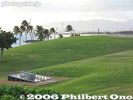
Ehime Maru Memorial in Kakaako Waterfront Park, Honolulu えひめ丸慰霊之碑The memorial is on a slope with a good view of the ocean. It was indeed a suitable place for such a memorial.
|
|
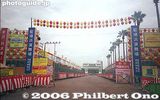
One of Japan's grandest festivals, the Tokushima Awa Odori is a summer dance performed in central Tokushima city. Numerous dance troupes called "ren" appear in a long parade along the city's main streets for four evenings in mid-Aug. About 2 million people see it during the four days it is held. It is like a bon dance to greet the souls of the deceased returning to visit. There are other Awa Odori festivals in Japan, but the one in Tokushima is the original and largest one. "Awa" is the former feudal name of Tokushima. Photo: Entrance to one of the spectator areas called "embujo" (admission charged). 藍場浜演舞場
|
|
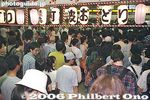
Crowd at JR Koenji Station on Awa Odori night.The Koenji Awa Odori is basically a parade of dancers. Many groups of dancers from various parts of Japan participate in the parade that follows the main shopping streets near Koenji Station on the Japan Railways Chuo Line in Tokyo.
|
|

Occupying a huge plot of land in the center of the city, Kanazawa Castle has undergone extensive renovations and reconstruction. The main castle buildings are now magnificently restored.
|
|

Kenrokuen is one of Japan's three most famous gardens (besides Korakuen in Okayama and Kairakuen in Mito, Ibaraki). The garden was originally the castle garden for Kanazawa Castle. Katsurazaka Entrance to Kenrokuen Garden 桂坂口
|
|
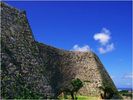
Nakagusuku Castle is part of a World Heritage Site of Okinawan gusuku castles. This is a view looking eastward from the base of the 3d enclosure (migusuku). Photos in this album all by Michael Lynch. Constructed in mid-fourteenth century of limestone rocks, placed without the use of mortar, Commodore Perry praised the construction technique on his visit to Okinawa in 1853.
|
|

Map of Kanazawa Castle Park and Kenrokuen Garden
|
|

PR poster for the Kamogawa Odori geisha dance held during May 1-24 in Pontocho.
|
|

Kakegawa Castle as seen from the train
|
|

Kakegawa Station, south entrance
|
|

Kanagawa Prefecture's largest Awa Odori is held annually during the last weekend in July in this city of Yamato. Preview event near Yamato Station.
|
|
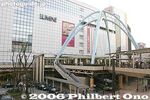
JR Tachikawa Station
|
|

Kanayama Jinja Shrine is a small shrine within the grounds of the Wakamiya Hachimangu Shrine near Kawasaki Daishi Station. On the first Sun. of April, it holds this now-famous Kanamara Festival nicknamed the Phallus or Fertility Festival. Festival starts at 11 am. But a large crowd was already there well before that time. Entrance to shrine on the day of the Kanamara Festival. (If you're below age 18, please leave now.)
|
|

Bird's eye view of Shirakawa-go from Ogimachi Castle ruins.
|
|

Side view of Wada-ke House
|
|

JR Kawagoe Station 川越駅
|
|

Kawagoe Matsuri is a parade of ornate floats during the day and evening in the city's old town of traditional buildings. Around 15 floats appear during the festival. Held on the third weekend in Oct. Main road where the festival will climax in the evening.
|
|

Entrance to Honmaru Goten palace, Kawagoe Castle.
|
|

Gate to Kitain, a Tendai Buddhist temple. Part of Kawagoe's National Important Traditional Townscape Preservation District (重要伝統的建造物群保存地区).
|
|

PR poster designed by Tetsuo OshiroPoster for the race.
京都大学ボート部OBの尾城徹雄様に作成したポスター。大学内や大津市石山商店街などで張り出された。
|
|

From late April to early May, five long strings of giant carp streamers swim in the air high above the Sagami River in Sagamihara, Kanagawa. This event was started in 1988.
|
|

Shirakawa-go is also a National Important Traditional Townscape Preservation District (重要伝統的建造物群保存地区).
|
|
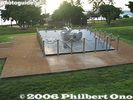
The memorial was unveiled on Feb. 9, 2002, a year after the accident.
|
|
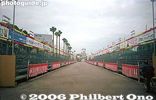
Spectator seats. Admission is 1,000 to 2,000 yen.
|
|

Each dance troupe starts with a lantern bearer showing the name of the troupe.The dance is quite simple. While bobbing up and down, the dancer holds her hands above the head and shakes the fingers. This hand gesture indicates that the person has gone crazy. It is therefore nicknamed the "fool's dance." The dance is held on the last weekend in August.
|
|

Kanazawa Castle was the base for the Kaga Domain (Ishikawa and Toyama Prefectures) ruled by the Maeda clan 1583–1871 starting with Maeda Toshiie.
|
|

World Heritage Marker. Photo copyright 2009 Michael Lynch.
|
|

Ninomaru Northern Stone wall along a moat. 二の丸北面石垣
|
|

Kenrokuen is classified as a "kaiyu-shiki teien" (回遊式庭園) or "circular-strolling Japanese garden." It's a common and classic Japanese garden design where you simply walk around the garden, usually around a central pond.
|
|

Pontocho Kaburenjo theater, venue for Kamogawa Odori.
|
|

Kakegawa Station, north entrance
|
|

Yotsuashi-mon GateMain gate to enter the castle grounds. A reconstruction.
四足門
|
|
|
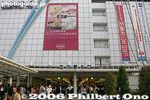
JR Tachikawa Station entrance
|
|

Shrine banners and cherries in full bloomThe red banner says "Kanayama Jinja" with an phallus (erect) logo on the top.
|
|

Path to Wada House entrance
|
|

JR Kawagoe Station plaza
|
|

One of the picturesque streets of the city.
|
|
|

Kitain Main hall, Kawagoe
|
|

There are five rows of streamers. In Japan, the koi carp is regarded as a symbol of valiant manhood because it swims up the river against the rapids.
|
|
|

Crowds already line Tokushima's main street soon to be closed to traffic.
|
|
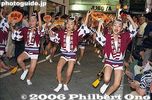
The troupe can consist of children (as young as age 2 or 3), women, and men.The Awa Odori originated 400 years ago in Tokushima Prefecture (in Shikoku) where it is one of Japan's most famous festivals. Although it is not as large as the one in Tokushima, the Koenji Awa Odori in Tokyo has become a major summer festival in Tokyo.
|
|
|
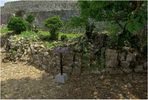
Sacred Site. There are eight special places of worship (Utaki) located within the castle walls. This view looks toward the East from the inside of the 1st enclosure. Photo copyright 2009 Michael Lynch.
|
|

Shinmaru Park 新丸広場
|
|

Kasumigaike Pond and the famous Kotoji-toro stone lantern. The lantern is shaped like a bridge that supports a string on the koto instrument. 霞ヶ池 徽軫灯籠
|
|

Pontocho is a narrow alley and known as a geisha district.
|
|
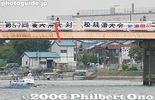
Karahashi Bridge as the starting point for alumni races
|
|

Main street in front of station
|
|

Steps to the castle tower
|
|

Pre-festival event held in the afternoon, Yamato Awa Odori
|
|
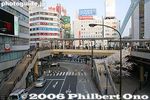
JR Tachikawa Station walkways
|
|

Pumping (or humping) the...
|
|

Close-up of Ogimachi
|
|

Main house on left and latrine on right with large vats to gather fertilizer.
|
|

Hon-Kawagoe Station 本川越駅
|
|

Children lead the way for a float at Kawagoe Festival.
|
|

Garden
|
|

Main hall
|
|

The cable length is 250 meters and 13mmm thick. There are about 1,200 carp streamers. They are reused every year and donated by local families. (I also noticed a few advertising carps.)
|
|
|
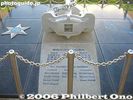
On Feb. 9, 2001, a small Japanese fisheries training boat from Uwajima, Ehime Prefecture was struck by the USS Greeneville submarine as it bolted to the surface off the coast of Honolulu, Hawaii. Nine Japanese high school students, teachers, and crewmen died aboard the Ehime Maru. A year later, a waterfront memorial was built in Honolulu.
|
|

These photos were taken in Aug. 1999.
|
|

The Koenji Awa Odori has become a major summer festival in Tokyo. It had a humble beginning in 1957 when it was originally called the Koenji Baka Odori. "Baka" means fool.
|
|
|
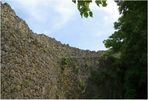
A view from the base of the West enclosure. Constructed in mid-fourteenth century of limestone rocks, placed without the use of mortar, Commodore Perry praised the construction technique on his visit to Okinawa in 1853. Photo copyright 2009 Michael Lynch.
|
|

Dobashi-mon Gate stone walls 土橋門石垣
|
|

Famous Kotoji-toro stone lantern 徽軫灯籠
|
|

Dance program for 2005.
|
|

Kakegawa, Shizuoka
|
|
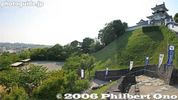
Castle tower
|
|
|
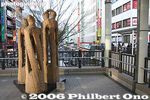
Walkway sculpture
|
|

The festival is wildly popular with people from overseas.The shrine had various phallus props to pose with.
|
|

Main house with a recently rethatched roof, making it look very smooth.
|
|

Toki no Kane, Time Bell Tower, symbol of Kawagoe. Part of Kawagoe's National Important Traditional Townscape Preservation District (重要伝統的建造物群保存地区). 時の鐘
|
|
|
|
|

Pagoda at Kitain temple, Kawagoe
|
|

Sekigahara saw one of Japan's most pivotal battles on Oct. 21, 1600 (Sept. 15 of Keicho 5) between Tokugawa Ieyasu's Eastern Forces and Toyotomi Hideyoshi loyalist Ishida Mitsunari's Western Forces. Ieyasu's victory in the Battle of Sekigahara sealed Japan's historical fate for the next 250 years. The former battlefield is dotted with monuments indicating the positions of various warlords during the battle.
This photo shows Mt. Momokubari where Tokugawa Ieyasu first set up his base camp for the Battle of Sekigahara. It is next to busy Route 21. A short distance east of Sekigahara Station. The former Sekigahara battlefield has numerous monuments.
|
|

Banners and a monument mark the spot on Mt. Momokubari where Tokugawa Ieyasu's first base camp was established during the Battle of Sekigahara on Sept. 15, 1600.
|
|

Ieyasu and his troops were here from about 6 am to 10 am on the day of the Sekigahara battle. He later moved closer to the front line as the battle was going his way. This is a National Historic Place. 桃配山 徳川家康最初陣跡
|
|

Steps going up to Tokugawa Ieyasu's first base camp at Momokubari during the Battle of Sekigahara on Oct. 21, 1600 (Sept. 15 of Keicho 5). Today it's just a small hill. The highway seemed to have cut through most of it.
|
|

Steps going up to Tokugawa Ieyasu's first base camp during the Battle of Sekigahara.
|
|

At the top, see the two large rocks which served as a table and bench for Ieyasu. 家康の腰掛岩と机石
|
|

Monuments marking Tokugawa Ieyasu's first base camp during the Battle of Sekigahara. The banners have the Tokugawa family crest.
|
|

View of the Sekigahara battlefield from Tokugawa Ieyasu's first base camp at Momokubari.
|
|

Monument marking Tokugawa Ieyasu's first base camp during the Battle of Sekigahara.
|
|

Another smaller monument marking Tokugawa Ieyasu's first base camp during the Battle of Sekigahara.
|
|

Sign explaining that the two rocks below were said to be used as a bench and table for Ieyasu.
|
|

Behind the monuments is a trail probably used by Ieyasu's troops on Mt. Momokubari-yama.
|
|
|

Names of the nine Japanese who died
|
|
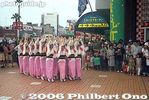
Pre-festival warm-up performance.
|
|

Highway in front of the castle.
|
|
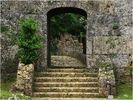
Rear Gate. Most visitors will enter through this gate to the castle, as it is closest to the parking and ticket sales. Photo copyright 2009 Michael Lynch.
|
|

Dobashi-mon Gate stone wall 土橋門石垣
|
|

The strolling path is not a perfect circle, but you start and finish at the same point. The strolling path is lined with Japanese pines, flowering plants, maples, etc.
|
|

Barrels of sake next to the theater.
|
|

Kyoto Univ. in dark blue T-shirts
|
|

Stairs to Kakegawa Castle tower
|
|

Shimizu Bank
|
|

Yamato Station
|
|
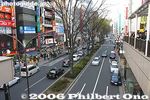
Street
|
|

Dickhead hat. Actually, I don't know what they call it, but that's what I call it.
|
|

One trademark of the dancers is the crescent-shaped straw hats.
|
|

Shirakawa-go 白川郷
|
|

Wada House, Shirakawa-go
|
|

There is a bell at the top which is rung 4 times a day. The bell or gong looks like a temple bell.
|
|
|
|
|
|
|

Inscription in English
|
|
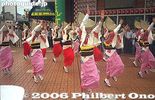
This was in front of a dept. store near Tokushima Station.
|
|
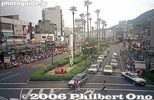
Shinmachi-bashi road in front of Tokushima Station 新町橋通りIt was Awa Odori time.
|
|

Outer castle wall
|
|
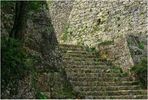
Stone Stairs. They lead to the 2nd enclosure. Visitors should wear sturdy walking shoes, as the stone-lined pathways and stairs can be very difficult to walk on without twisting an ankle. Photo copyright 2009 Michael Lynch.
|
|

Dobashi-mon Gate stone wall. Notice the hexagonal stones. 土橋門石垣
|
|
|
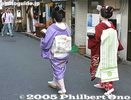
A geisha/geiko and maiko head to the theater to see the Kamogawa Odori. Notice the different obi sash on the back.A maiko is an apprentice geisha. Her obi sah on the back is long, as well as her sleeves.
|
|
|
|
|

Shimizu Bank
|
|

Balloons, souvenirs and trinkets sold near the train station.
|
|

Sidewalk
|
|

Carving daikon. Anybody can join in and carve. 大根削りLater to be auctioned off.
|
|

The men look more like the "fools."
|
|
|
|
|

The bell is rung at 6 am, 12 noon, 3 pm, and 6 pm.
|
|

Tekomai geisha lead the way for a float at Kawagoe Festival.
|
|
|
|
|

Sagami River Koi-nobori
|
|
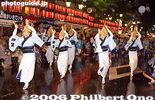
The parade route centers on JR Koenji Station. There are wide and narrow portions of the route.If it rains, they may stop the festival early.
|
|

Inscription in Japanese
|
|
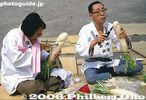
Carving daikon (old photo). These men were really good at carving the daikon.
|
|

Sculpture of Awa Odori dancers on mailbox
|
|
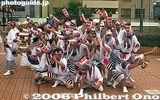
They performed in the afternoon.
|
|
|
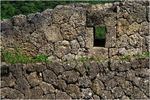
Gun Port. At several locations along the North walls of the castle, gun ports may be seen, where sentries could repel invaders. Photo copyright 2009 Michael Lynch.Many visitors are surprised to learn that firearms were in existence in the 14th century.
|
|

Gate to Former Brigade Office 切手門
|
|

Karasaki Pine Tree in Kenrokuen Garden, Kanazawa, Ishikawa Pref.
|
|

Pontocho Kaburenjo theater
|
|

Finish line 300 meters later
|
|

Final gate to Castle tower
|
|

Shimizu Bank's relief of Kazutoyo and Chiyo
|
|
|

Monorail
|
|
|

Gable openings let light and air come through the attic to foster silkworms.
|
|

Kura-zukuri style architecture. Local merchants built these earthen buildings after the Great Fire of Kawagoe in 1893. 蔵造りの町並み
|
|

Tekomai
|
|

Veranda facing a garden.
|
|

Over 500 stone statues of Rakan Buddhist disciples
|
|
|
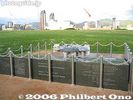
I hope the former submarine commander Scott Waddle comes here on each anniversary of the accident and pray for their souls.
|
|
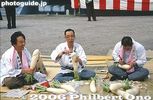
Carving daikon. Since some activities are conducted on the ground, the festival is also called Jibeta (Ground) Matsuri.Once upon a time, the festival was still mostly a local event with much fewer people.
|
|

Sculpture of Awa Odori dancers
|
|

Tokushima's Awa Odori originated in 1587 to mark the completion of Izan Castle in Tokushima (formerly called Awa Province). The castle lord allowed the people to celebrate and they danced the night away.
|
|

Ishikawa Bridge to Ishikawa-mon Gate
|
|
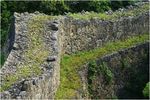
Terraced Walls. A view looking from north to south standing at an elevated point along the inner castle walls. Photo copyright 2009 Michael Lynch.
|
|

Former Brigade Office (closed to public) 旧第六旅団司令部
|
|
|

Geiko and maiko in front of Pontocho Kaburenjo theater
|
|

Tokyo Univ. (Todai) crew return to land after a race
|
|

View of castle palace
|
|

Shopping street
|
|

Main drag and shopping arcade called Yamato Chuo-dori大和中央通り
|
|

It is most crowded along the large avenues. The crowd is several rows deep. Those in the front are expected to sit down.
|
|
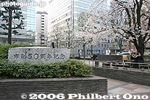
50th anniversary park
|
|

A small stream beside the house helps to melt the snow falling off the roof.
|
|
|
|

Kurazukuri earthen buildings were fire-resistant, so they built these fire-resistant shops after the Great Fire. "Kura" means warehouse.
|
|
|
|

Carved during the 18th and 19th centuries.
|
|
|
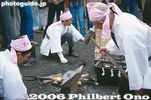
Forging a steel phallus (old photo)The demon living in the vagina of the women bit the man's phallus each time. So one guy made a steel phallus and the demom broke his teeth.
|
|

Rear view of a dancer
|
|

Sculpture of Awa Odori dancer
|
|

Ishikawa-mon Gate 石川門
|
|

Three Sacred Sites. The South enclosure contains three Utaki (sacred sites), all within a small area, as seen by the signs in this picture. Many Okinawans come to worship at these Utaki and make offerings. Photo copyright 2009 Michael Lynch.From the high ground to the left of this scene, you may be able to see Kudaka-Jima, where locals believe the first Okinawans originated.
|
|
|

Sukiyashiki stone wall. Some markings are engraved on the stones. 数寄屋敷石垣
|
|

Ropes are strung over the tree to protect it against the weight of snow.
|
|

Entrance to Pontocho Kaburenjo theater. You can buy tickets for the day's performance.
|
|
|

View of Honmaru
|
|

Shopping street
|
|

Spectators wait for the parade to begin.
|
|

The dancers hop on one leg.So what is Tokushima's Awa Odori doing in Koenji, Tokyo? It was first organized by a youth group of Koenji's retail merchants in 1957. They wanted to hold an event to attract more shoppers to the area. Neighboring town Asagaya had already started the Tanabata Festival in 1954. The Tanabata Matsuri, of course, is from up north in Sendai, Miyagi Pref. So the Koenji folks decided to transplant a southern festival to Koenji. That was the Awa Odori.
|
|
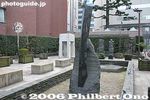
Sculptures
|
|
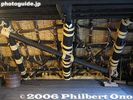
Underside of roof made of an A-frame truss structure
|
|

The thatched roof is replaced every 30 years. Every spring, 6 or 7 thatched roofs are replaced in Shirakawa-go.
|
|
|

Hill where the Fujimi Turret once stood.
|
|

五百羅漢
|
|
|

Boat for Taketomi at Ishigaki Port.
|
|
|
|

From Tokyo, Gala Yuzawa is the most convenient place to ski. The Joetsu shinkansen can take you there in little over an hour and the train station has the ski gondola. An easy day trip.
|
|

Tokushima Awa Odori dancer
|
|
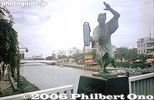
Sculpture of Awa Odori dancer
|
|

JR Kanazawa Station JR金沢駅
|
|

Passing through Ishikawa-mon Gate 石川門
|
|
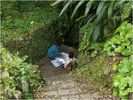
Sacred Well. There are three spring-fed wells within the castle. This one is located in the West enclosure and is also a sacred site where people make ritual offerings. Photo copyright 2009 Michael Lynch.The woman on the left gave consent to take a photo after helping her down the rough, stone stairs.
|
|

Kawagoe Festival
|
|

Gokuraku-bashi Bridge 極楽橋
|
|

Karasaki Pine Tree in Kenrokuen Garden 唐崎松
|
|

Inside the theater, waiting for the start of the 168th Kamogawa Odori (in 2005) to start.
|
|

Sugawara house from Tsuruoka city, Yamagata Prefecture. In heavy snow, the front window was used as the door.
|
|

Inside Castle tower
|
|
|

June 9, 2007. Hula dancers rush to Pukari Sanbashi Pier where the Hokule'a canoe is to dock. ぷかりさん橋
|
|

Several groups perform along the main road on the east side of JR Shinjuku Station. This is in front of Isetan Dept. Store.
|
|

Saitama Stadium is a large soccer stadium built for the Soccer World Cup in 2002 and now home of the Urawa Reds. Way to Saitama Stadium 2002 from the train station.
|
|

The festival/parade starts before dark.
|
|

Area around entrance to Hossawa Falls
|
|

The first Koenji Awa Odori in 1957 had only 57 dancers and about 2,000 spectators. Iroha-ren いろは連There are now about 30 to 40 Awa Odori parades held in Tokyo alone, usually in shopping areas. The one in Koenji is the largest in Tokyo.
|
|

Minowa Station on the Hibiya Line 三ノ輪駅
|
|

On July 29, 2007, this regatta was held for the second time. It targets mainly beginner rowers. Organized by the Seta Rowing Club which seeks to have more people enjoy water sports on Lake Biwa. Seta-Karahashi Bridge was the regatta's starting line. The Lake Biwa Rowing Song CD was awarded to all the 1st, 2nd, and 3rd place winners in all five categories.
|
|

Anegawa River was the site of a major battle with Oda Nobunaga and Tokugawa Ieyasu defeating Azai Nagamasa and the Asakura clan on Aug. 9 1570. The area was left with so many dead that the river ran red.Local place names such as Chibara (Blood Field) stuck. Looking toward Nomura-bashi Bridge where the Anegawa battle monument stands.
|
|
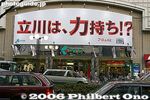
"Does Tachikawa have strength?"
|
|

Standing room only at Wakamiya Shrine
|
|

Konomiya Shrine holds the Hadaka (Naked or Nude) Festival in early March, or Jan. 13 of the lunar calendar. Men in loincloths parade around the streets until they reach the shrine.A Sacred Man (Shin-otoko) also appears in the shrine and the men try to touch him before he slips into the shrine's window. The festival's real name is Naoi-shinji 儺追神事 which is a rite to dispel bad luck. Photo: Nearest station is JR Inazawa Station on the Tokaido Line. 稲沢駅
|
|
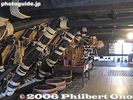
The bottom ends of these beams are pegged into a point (komajiri) resting on another cross beam. Wada House, Shirakawa-go
|
|

It costs several million yen and a small army of workers to replace the thatch. The cost is subsidized by the town, prefecture, and national government.
|
|

Kawagoe Festival Museum (Kawagoe Matsuri Kaikan) 川越まつり会館
|
|

Former castle moat.
|
|
|

The longest carp is 10 meters.
|
|

On Taketomi, the best way to get around.
|
|

Where silkworms were raised to make silk cocoons.
|
|
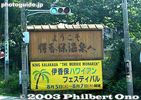
Ikaho is also a sister city of Hawaii island. During Aug. 5-7, 2003, Ikaho hosted the 7th King Kalakaua Merrie Monarch Hawaiian Festival featuring hula performances by numerous Japanese hula groups.
|
|
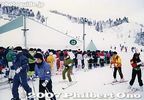
The line gets very long during the morning, so I usually go later in the day and ski until night when it is much less crowded. I catch the last shinkansen back to Tokyo.
|
|
| 11983 files on 48 page(s) |
1 |
 |
 |
 |
 |
|